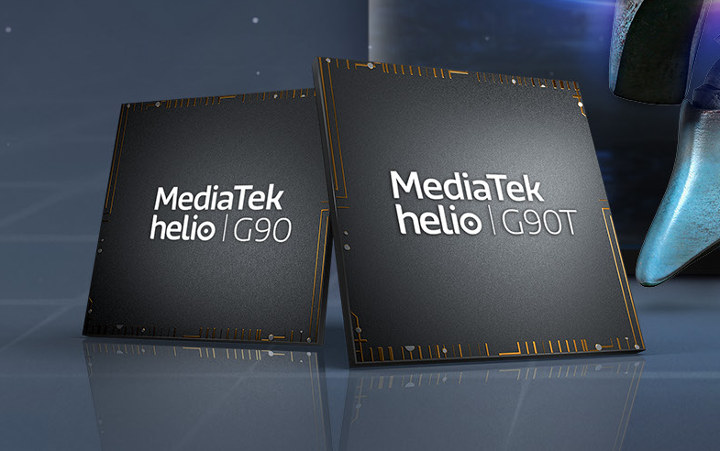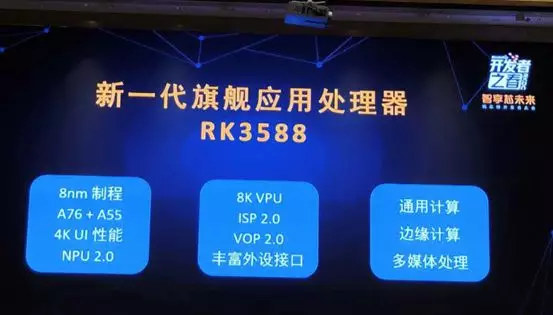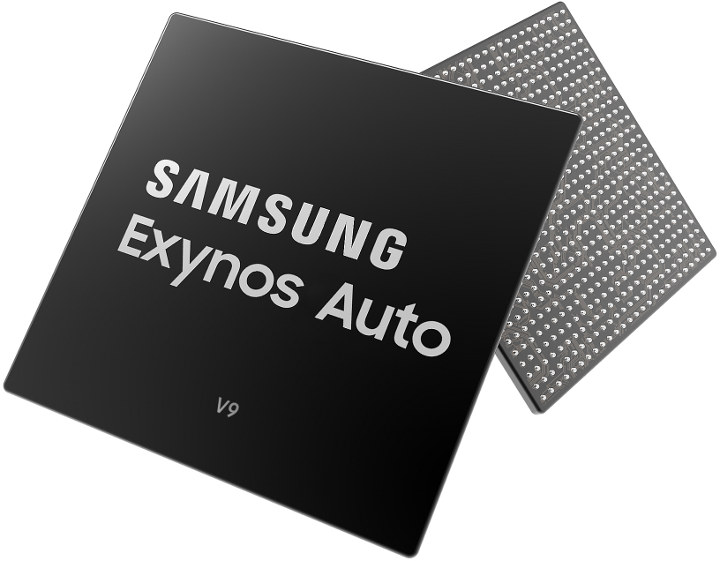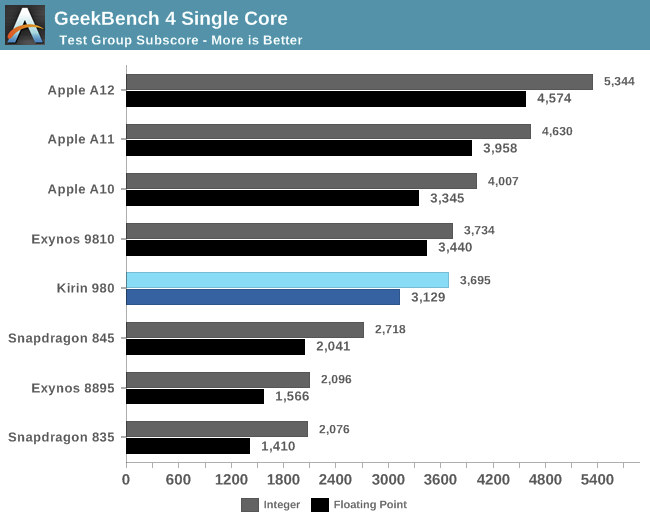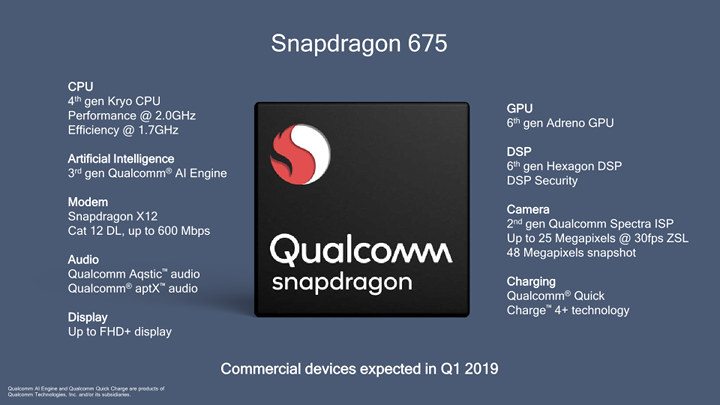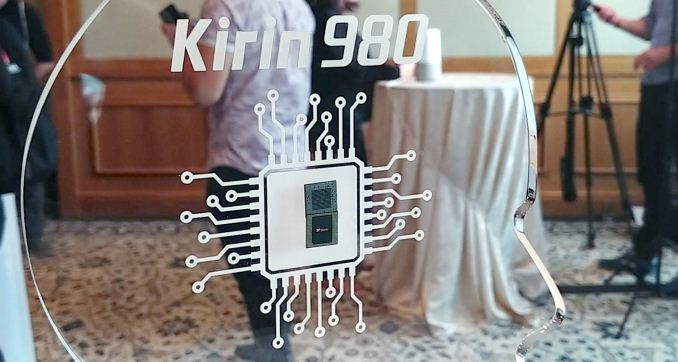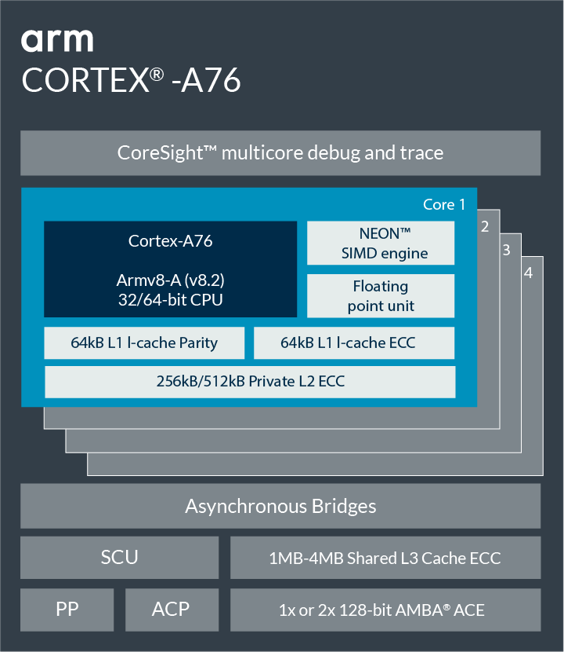We’ve known MediaTek P-series for mid-range “premium” smartphones, and MediaTek X-Series for higher-performance mobile devices for a few years, but the company is now introducing G-series processors specifically designed for mobile gaming starting with MediaTek Helio G90 and G90T processors. Both feature eight Arm Cortex-A76/Cortex-A55 cores clocked at up to 2.05GHz coupled with an Arm Mali-G76 3EEMC4 with speeds up to 800MHz, as well as “HyperEngine Game Technology”, an umbrella name covering multiple features we’ll cover further below. MediaTek Helio G90T specifications: CPU – Arm Cortex-A76 plus Cortex-A55 octa-core up to 2.05GHz “with a large L3 cache” GPU – Arm Mali-G76 3EEMC4 with speeds up to 800MHz AI Acceleration – Up to 1TMACs AI Performance Memory – LPDDR3, LPDDR4x up to 2133MHz, 10GB RAM max Storage – eMMC 5.1, UFS 2.1 Display – Up to 2520 x 1080 Video Encoding – H.264, H.265 / HEVC @ 4K 30fps, FHD 120fps, HD 240fps […]
RK3588 8K Arm Cortex-A76/A55 SoC, Rockchip Roadmap to 2020
Rockchip had their annual event yesterday offering a view of past achievements, as well as a glimpse into the future with new products announcements. The company is ready to go to the next level with their Rockchip RK3588 featuring Cortex-A76 and Cortex-A55 cores, 8K video decoding support, 4K user interface support, an NPU 2.0 (Neural Processing Unit) manufactured using an 8nm LP process. The processor should have eight cores in a 4+4 dynamIQ configuration according to a tip from “coldfish”, and the new 8nm process is expected to increase performance by 20 to 30 percent, while the power consumption will be reduced by 40 percent. Mass production is expected for Q1 2020. The company also showed a slide with their video encoder/decoder IP, and Gen3 should be in RK3588 since that’s the only one with an 8K 60 fps decoder using either AVS3 or H.266 (VVC). I’m quite confused with […]
Samsung Exynos Auto V9 Octa-core Cortex A76 Processor Targets Automotive Infotainment Systems
Samsung Exynos processors are well known for their use in mobile processor, but the company has now announced their first automotive grade processor with Exynos Auto V9 SoC featuring eight Cortex A76 cores clocked at up to 2.1 GHz, a Mali G76 GPU, a HiFi 4 audio digital signal processor (DSP), an intelligent neural processing unit (NPU), and a safety island core that supports Automotive Safety Integrity Level (ASIL)-B standards. Exynos Auto V9 does not come with the latest Cortex-A76AE cores for autonomous driving, as instead the processor is specifically designed for in-vehicle infotainment (IVI) systems, and will be found in Audi cars starting in 2021. The processor also supports LPDDR4 and LPDDR5 DRAM, can control up to six independent displays and twelve cameras. Three separate sets of Mali G76 GPU cores will enable simultaneous support for the cluster display, central information display (CID) and rear-seat entertainment (RSE). The NPU […]
HiSilicon Kirin 980 Benchmarks Show Cortex A76’s Impressive Performance & Efficiency Improvements
HiSilicon Kirin 980 was the first processor announced with Cortex A76 cores, which were said to deliver laptop-class performance, with 35% performance improvement over Cortex A75, and around twice the performance of Cortex A73 cores thanks to improvements, and a higher CPU frequency up to 3.0 GHz. But now that Huawei Mate 20 / Mate 20 Pro smartphones are out, various reviews have been published, and Anandtech was mostly able to confirm the claims. In most case, actual results were inline with expectation despite Kirin 980 clock speed being “limited” to 2.6 GHz. Looking at GeekBench 4 single-thread integer and floating-point scores, the Cortex A76 core based Kirin 980 is significantly faster than Cortex A73 powered Snapdragon 835 clocked @ 2.45 GHz. Precisely: 1.77x faster in the integer score,and 2.21x faster in the floating point score. SPECS2006 confirmed the good performance with 1.89x higher integer score, and 2.04x faster for […]
Qualcomm Snapdragon 675 Cortex-A76 based Processor Targets High-Tier Mid-Range Smartphones
Last August, Qualcomm unveiled Snapdragon 670 processor with performance and efficiency Kryo 360 cores believed to be based on Cortex-A75 and Cortex-A55 cores, but the company has just announced an update with Snapdragon 675 mobile platform powered by Kryo 460 cores which are based on Arm Cortex-A76 according to Anandtech, and so far, Cortex-A76 was only found in “premium” processors such as HiSilicon Kirin 980. Beside the upgrade cores, the company also claims the processor brings “outstanding gaming, a leap in artificial intelligence (AI) capability and a cutting-edge camera”. Snapdragon 675 main specifications: CPU 2x Kryo 460 (Cortex-A76 based) @ 2.0GHz with 256KB L2 6x Kryo 460 (Cortex-A55 based) @ 1.8GHz with 64KB L2 GPU – Adreno 612 DSP – Hexagon 685, Qualcomm AI Engine Display – Support for FHD+ display Camera – Spectra 250L ISP with triple-camera support Audio – Qualcomm aptX and Aqstic Modem – Snapdragon X12 LTE […]
Arm Cortex-A76AE Processor is Designed for Autonomous Driving Applications
Arm Cortex A76 processor core was first unveiled in June of this year, and very recently Hisilicon – part of Huawei – introduced Kirin 980 processor with four Cortex A76 cores, four Cortex A55 cores. Arm has now unveiled another variant of Cortex-A76 core. Cortex-A76AE (Automotive Enhanced) is designed for automotive application, and specifically autonomous driving applications, thanks to extra safety features such as Split-Lock capability which includes the ability for Dual Core Lock-Step (DCLS). The latter means that two processors are running the same code at the same time, and the instructions is only validated is the results are identical on both processors. Microarchitectural highlights of Cortex-A76AE for safety: Dual Core Lock-Step (DCLS) – The Cortex-A76AE is capable of running in Dual Core Lock-Step (DCLS), and hence is able to contribute towards a system’s ASIL D hardware diagnostic coverage requirements. Memory protection – The Cortex-A76AE supports Single Error Correction, […]
HiSilicon Unveils Kirin 980 Octa-core Cortex A76/A55 Processor with Mali-G76 GPU
Arm announced Cortex A76 CPU core and Mali-G76 GPU in June of this year, and in the past, we normally had to wait about a year between the announcement and the actual launch of SoC with the new IP core. But courtesy of HiSilicon (Huawei), we already know of one Cortex A76 processor with Kirin 980 processor featuring three clusters with two high performance Cortex A76 cores, two Cortex A76 cores clocked at a low frequency, and four Cortex A55 efficiency core. The company also added the new Mali-G76 GPU for good measure. Kirin 980 specifications and key features: CPU (DynamIQ clusters) 2x Cortex A76 cores @ up to 2.60 GHz with 512KB L2 cache 2x Cortex A76 cores @ up to 1.92 GHz with 512KB L2 cache 4x Cortex A55 cores @ 1.80 GHz with 128KB L2 cache 4MB shared L3 cache GPU – ARM Mali-G76MP10 @ 720 MHz […]
Arm Announces Cortex-A76 CPU with Laptop-class Performance, Mali-G76 GPU, Mali-V76 8K VPU
Arm Cortex A75 based processors are only found in a few SoCs and devices, but Arm keeps on innovating, and they’ve now announced a new suite of of IP with Cortex-A76 CPU enabling 35 percent more performance, and Mali-G76 GPU with ML support and 30 percent higher efficiency and performance. SoC based on those new CPU and GPU IP will provide “laptop-class” performance, and the company also announced Arm Mali-V76 VPU with support for 8K video decoding and encoding. Arm Cortex A76 After Cortex A75, the Arm Cortex-A76 CPU is the second high performance processor core based on DynamIQ technology, and beside the 35 percent performance gain mentioned in the introduction, it also offers 40 percent improved efficiency, as well as delivers 4x compute performance improvements for AI/ML at the edge. Highlights of Cortex A76: Architecture – Armv8-A (Harvard) with Armv8.1, Armv8.2, Armv8.3 (LDAPR instructions only), cryptography and RAS extensions […]


